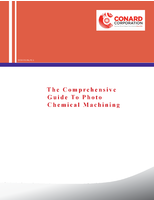Sierra Announces New Meter for Continuous Fuel Consumption Measurement
Monterey, CA – The The Automotive Test Division of Sierra, known as Sierra-CP Engineering, is a global engine, vehicle and emissions test specialist, announces its new FuelTrak™ Transient 300 Fuel Meter.
The FuelTrak Transient fuel mass flow meter is an innovative technical advancement to steady-state gravimetric fuel measurement that enables continuous transient and steady-state fuel flow metering, as well as density measurement. The fuel gas flow meter system utilizes two measuring techniques to determine and confirm the fuel consumption of the engine. The two techniques are a gravimetric fuel measurement system and a Coriolis inline fuel flow meter. The two fuel consumption flow meter systems are linked together to attain the benefits that each can offer, namely Coriolis at 'normal' flow rates and gravimetric at low flow rates. They can also be used as a fuel flow meter totalizer to verify each other's performance and operation for calibration purposes.
"Based on the successful introduction of our FuelTrak Transient fuel meter in 2006, Sierra has built on its growing reputation and subsequently upgraded all of the wetted parts to stainless steel to ensure that the FuelTrak is suitable for all fuel types. Recent client trials of the FuelTrak, coupled with Sierra's fuel conditioning system for both diesel and gasoline engines, has impressed users particularly with the level of repeatability. The system has also impressed users at low flow fuel measurement at idle, which is due to the simultaneous duel methods of measurement, gravimetric fuel measurement and a Coriolis inline fuel flow meter," says Matthew Olin, President of Sierra.
FuelTrak 300 Fuel Consumption Benefits
• Vehicle tank simulation for max fuel flow meter measurement
• Gravimetric and Coriolis gas measurement
• High-accuracy measurement even for low flow fuel meter measurement
• Continuous inline fuel measurement capability
• Two liquid measuring techniques allows cross-referencing for calibration
• Fuel rate density measurement
• Bubble separation on return in line fuel systems
• Stainless-steel wetted parts for reference and special fuels
• Fuel temperature conditioning option available
• Small digital compact process unit allows positioning close to engine
• PID control
• EPA 1065 Requirements




